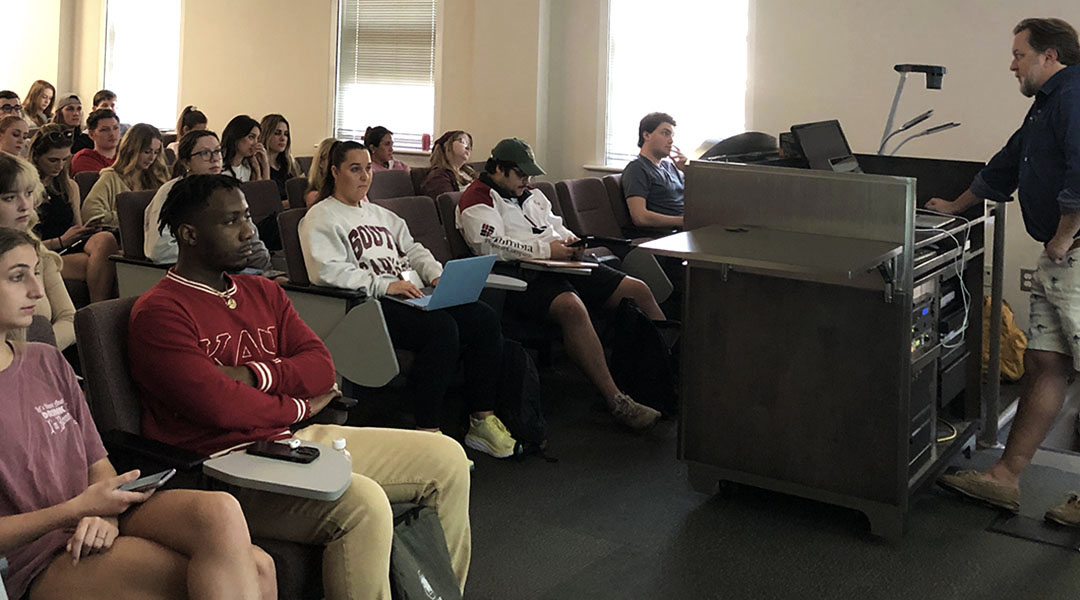A commercial for the dog food brand Farmer’s Dog won this year’s USA Today Ad Meter poll. It’s the first sentimental ad to win since 2015, which could be an indicator of the country’s emotional state, some say. (Screenshot from the Farmer’s Dog commercial)
Giant rabbits and Adam Driver clones weren’t enough for viewers hoping for a little more creativity in this year’s Super Bowl ads, research shows.
Viewers thought many of the commercials fell short. That’s despite costing most advertisers between $6 million and $7 million for one of the most coveted spots on TV, said Russ Gottwald, a college professor who helps students analyze Super Bowl ads each year.
“Nothing really jumped out and grabbed people the way some of the stuff did in previous years,” said Gottwald of the University of South Carolina.
The Super Bowl Commercials class teaches students to evaluate the ads and allows them to vote for the best commercials each year. Students rated them on persuasiveness, likability and brand identity.
The national advertising team that created the winning commercial in the students’ eyes earns the “Cocky Award” and an invitation to speak to the class.
A lack of ingenuity and an unwillingness to take risks this year led to a crop of commercials that earned a “collective ‘meh’” from students and came off as less funny than in previous years, Gottwald said.
Much of that was because, instead of thinking outside the box, advertisers played it safe by relying heavily on star power. That could be an indicator the country is in a relative state of calm, Gottwald said.
Companies stayed away from the political tension and division that has gripped the country in recent years in favor of things most people could agree upon, such as fan-favorite actors, musicians and athletes.
Although good for unity, it doesn’t necessarily yield great commercials, the students decided.
Noah Watson, a senior journalism major and a student in the class, rated all of the ads a 3 out of 5 overall.
“It was a pretty average year,” Watson said. “There’s not too many words to describe this year’s ads because there’s not many (exciting) ads to talk about.”
Gottwald himself was particularly disappointed in the lack of originality from beer companies.
This year marked the first time in three decades that Anheuser-Busch gave up the right to be the sole beer company to advertise during the Super Bowl.
The companies that did advertise missed a valuable opportunity by not going big, Gottwald said.
A Michelob Ultra went with an ad featuring Brian Cox and Serena Williams at the country club from “Caddy Shack,” and Remy Martin decided on an ad featuring Williams, football players and dancers set to a motivational speech were among the alcohol commercials that appeared.
Mia Hamilton, unlike her peers, was impressed with this year’s advertisements. Creating interactive ads like QR codes is another example of how commercials are affected by societal trends and attitudes, said Hamilton, who’s president of USC’s branch of the American Marketing Association.
“People don’t want to just watch an advertisement anymore,” Hamilton said. “They want to feel like the focus is on them.”
FanDuel, an online sports betting company, created a commercial featuring football star Rob Gronkowski, who played for New England and Tampa Bay, in attempt to stimulate audiences in the moment. People at home could wager money on whether or not Gronkowski would make a field goal in a live video.
Gronkowski missed, but FanDeul’s strategy didn’t, said Gottwald and Hamilton.
USA Today annually does its own Super Bowl ad poll, which also sometimes measures the country’s changing attitudes.
The poll crowned “Forever” – a commercial for the pet food brand Farmer’s Dog – the most popular commercial. It’s the first sentimental superbowl ad to win since 2015.
The ad follows the life of a woman and her dog from childhood to when she has a baby of her own.
The pandemic and political turmoil that began in the country in 2016 led to popular culture being driven by “a sense of the ridiculous,” Gottwald said. A sentimental ad winning over comedic commercials indicates the country is reaching a state of peace.
“All you could do was laugh, because it was just one thing after the other, ” Gottwald said. “The world was just completely going insane. My sense is that this year the world is actually a little calmer. Like, we have things to feel good about.”
That was an idea made clear by the entire production of the Super Bowl, Hamilton said.
Her main take away from the game?
“The world is healing.”
Advertisers spent between $6 million and $7 million on this year’s Super Bowl ads. But many viewers thought the commercials were mediocre. (Photo by Lauren Leibman)
Students in the USC Super Bowl Commercials class met to watch the Super Bowl live. They met again to rewatch and rate the ads. None of the commercials got strong reactions from the students, professor Russ Gottwald said. (Photo by Lauren Leibman)
After watching the ads, students rated them on persuasiveness, likability and brand identity. (Photo by Lauren Leibman)





